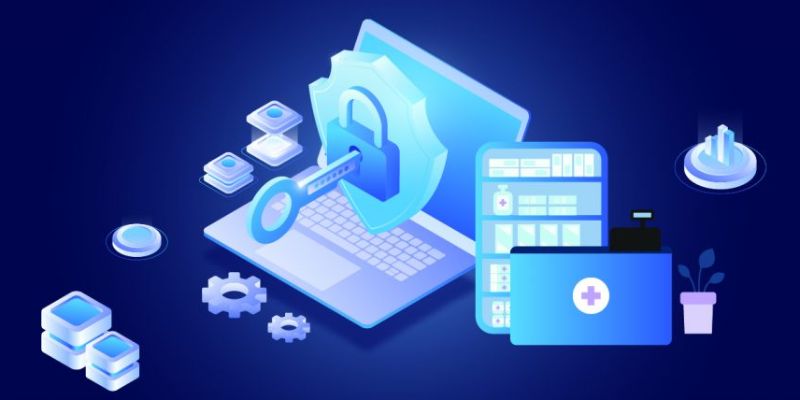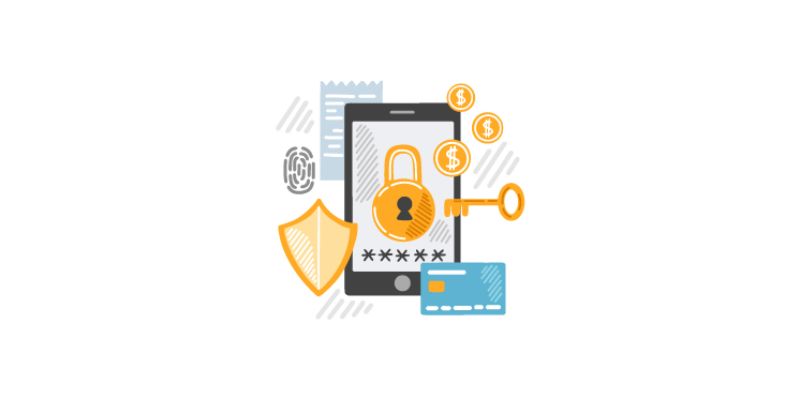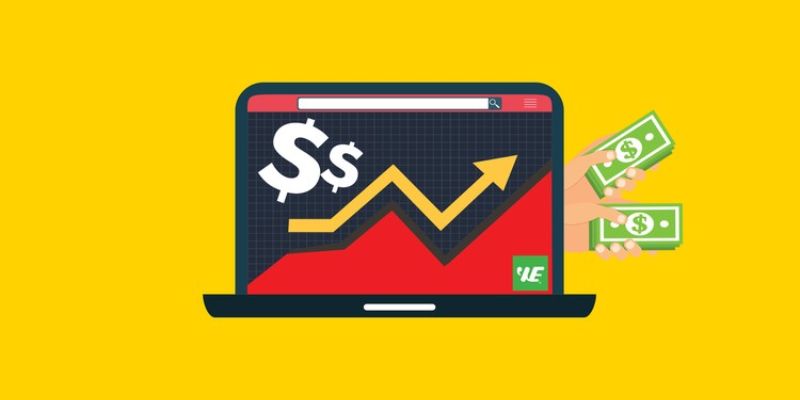In the digital age where every click could risk your cash, how to secure digital payments becomes a skill you can’t afford to ignore. I’ll walk you through the ultimate steps to keep your online transactions safe, steering you clear of fraud and misuse. Learn to lock down your cash flow tighter than Fort Knox. No more second-guessing if your money is snug in the web’s wallet. Get ready to master the art of safe e-spending with ironclad encryption, two-step verification, and fortresses of digital payment gateways. Dive in, and let’s turn your online payment process into an impregnable fortress of security!
Enhancing Your Digital Payment Security
Implementing Encryption for Transactions
When you shop online, you want to feel safe, right? That’s where encryption steps in. It turns your personal info into secret codes. Think of it like passing notes in secret code that only your friend can read. To keep your payment data safe, businesses use this method.
Encryption for transactions is like a superhero. It’s there to protect your credit card numbers and personal info from bad guys. It’s a must-have for any company you buy from online. Keep in mind that secure websites start with “https” and have a padlock symbol. These signs tell you that encryption is working to guard your info.
Adopting Two-Factor Authentication for Added Safety
Have you ever worn a belt and suspenders? That’s kind of what two-factor authentication (2FA) is like. You have your password, which is your belt. Then you add an extra step, your suspenders, for more security. This could be a code that gets texted to you or a thumbprint.
When you use 2FA, it’s much harder for someone to break into your account. They would need your password and your phone, which is unlikely. It’s an easy way for you to up your security game. Think of it like a secret handshake. Only you and the business know it. This keeps your money safer when you’re buying something online or banking on your phone.
Say goodbye to easy passwords and hello to solid security with two-factor authentication. It’s a simple move, but it makes a world of difference. Stay safe out there and remember, double-checking is always the way to go.

Building a Fortified Payment Gateway
The Role of Secure Payment Gateways in Preventing Fraud
To keep your money safe, a strong payment gateway is key. Think of it like a digital fortress. It stands guard, making sure your cash moves safe and sound. A safe gateway checks every payment to stop fraud in its tracks.
When you buy something online, your payment info needs to travel safely. Secure gateways use tools, like encryption, to protect this info. They scramble data into code that only the right receiver can crack. This makes stealing much harder for sneaky thieves.
A good gateway also watches for odd behavior. It sets off alarms if it spots anything fishy. Like if someone tries to buy a bunch of fancy phones at 3 AM. It checks to make sure it’s really you using your card. Plus, it can give you alerts if any weird stuff happens.
Compliance with PCI DSS and the Incorporation of SSL Certificates
To make sure we play by the rules, we stick to PCI DSS. It’s like a playbook for keeping card info safe. This means every part of the payment process must be solid and secure.
We also use SSL certificates for all online stores. This acts like a seal of approval. It tells you the website you are using is secure. When you see the padlock icon next to the web address, you know it’s safe to enter your card info. It’s like a secret handshake between your browser and the website.
These certificates also ensure that data stays private. Between you and the website only. No peeping Toms allowed. By using them, online shops show that they’re serious about keeping your details out of the wrong hands.
By building a strong gateway that follows the rules and uses SSL, we make sure your online shopping is as safe as can be. Remember, staying safe means staying alert. Update your devices, avoid risky Wi-Fi spots, and always lookout for anything that seems off. Your financial safety is worth that extra care.

Advanced Security Features for Digital Payments
The Emergence of Biometric Verification and Tokenization
We’re seeing cool new tools in payment security. Biometric verification and tokenization stand out. Your face or fingerprint can now confirm who you are when you pay. This means no one else can use your payment details. They just won’t match.
Tokenization is another game-changer. It replaces your card details with unique codes. Even if hackers find these codes, they are useless elsewhere. That’s because they only work for a specific transaction. Each time you buy something, a new code pops up. It’s like having a secret handshake every time you pay. It keeps your info safe from bad guys.
You can sleep easy knowing these two are like superheroes for your wallet.
Deploying Multi-Layer Security Protocols for Comprehensive Protection
Think of multi-layer security as an onion. It has many layers, each protecting your money. First comes encryption. It scrambles your card details into a secret code during a transaction. It’s tough for bad folks to crack.
Next is two-factor authentication. Imagine you’re trying to get into a secret club. They won’t let you in with just your I.D. They want to see a special pass too. That’s how two-factor works. Even if someone steals your password, they need another key to get into your account.
Payment gateways are your next layer. They’re like checkpoints on a bridge. Each car gets checked to make sure it’s good to go across. Secure gateways check every payment. They make sure everything looks right before letting it through.
All these layers come together for a tight security blanket. It keeps cyber baddies out and your money safe.
We live in a world full of clever thieves. But with tools like biometric checks and tokenization, we’re staying one step ahead. Combine that with layered security and you’ve got a fortress keeping your digital payments safe.
No more lying awake worrying about your card getting pinched. You can enjoy safe online shopping and peaceful slumber. Use that secure digital wallet without a fret. Just like heroes guard the city, these features guard your coins.

Proactive Measures for Payment Fraud Prevention
Real-Time Fraud Detection Systems and Suspicious Activity Monitoring
To keep your money safe, you need to spot the bad guys fast. Real-time fraud detection systems do just that. They watch your transactions like a hawk. When something looks fishy, they alert you or your bank right away. This cuts the risk of money loss from sneaky fraudsters. They use smart tech that learns what normal spending looks like for you. Then, they can tell when something is off. For example, if someone in another country tries to buy something with your card, and you never shop there, the system gets it. It knows this could be a red flag. Keep a close eye on your accounts. Check them often. If you see anything strange, report it at once. Use secure payment gateways when you shop online. Those are like safety nets for your card details. Encryption for transactions scrambles your data. This makes it hard for thieves to grab your card numbers. Look for websites that start with “https”. That ‘s’ means they’re safe to use. They have what’s called SSL certificates. These are like armor for your credit card info.
Data Breach Prevention Strategies and Regular Device Security Updates
Data breaches are big headaches. You don’t want your private details getting into the wrong hands. Keep your guard up by following payment security best practices. First, update your devices often. Software updates patch holes that hackers could sneak through. Think of it like fixing a broken fence around your house. Next, use two-factor authentication. That’s an extra step to prove it’s really you trying to get into your account. It’s like a double-lock on your door. Don’t forget about cybersecurity measures for payments too. Things like anti-malware software keep nasty bugs away from your money. And steer clear of public Wi-Fi for banking or shopping. It’s too easy for bad folks to snoop on what you’re doing. Instead, use a VPN. It’s like a secret tunnel for your internet stuff. Secure in-app purchases are crucial too. When you buy something in an app, make sure it’s got end-to-end payment encryption. This is like whispering your card number so only the right person hears it. And always, always listen to payment fraud alerts. They’re like a friend tapping you on the shoulder when they see something’s not right. By following these tips, you make it tough for the bad guys to mess with your money. Always remember, strong shields make weak spears. So, keep your shields up by applying the smart tips above, and enjoy safe online shopping and secure banking on the go.
In this post, we explored key ways to boost your digital payment security. From encrypting transactions to using two-factor authentication, these steps keep your money safe. We then dove into creating a strong payment gateway, talking about the need for secure systems, following PCI DSS rules, and adding SSL certificates.
Next, we discussed advanced protection like biometric checks and tokenization. Multi-layer security keeps threats away at every level. Last, we looked at how to catch fraud fast and stop data leaks, with constant monitoring and updates.
My final thought? Stay sharp and always use the latest in payment safety to protect your cash. Your peace of mind is worth it.
Q&A :
Sure, here are some SEO-optimized FAQs for the keyword “How to secure digital payments”:
What are the best practices for securing online transactions?
When making digital payments, employing a combination of cybersecurity measures is crucial. Always use strong, unique passwords and consider using multi-factor authentication for an extra layer of security. Ensure the device you are using is equipped with updated antivirus software and a firewall, and always keep your operating system and applications current with the latest security patches. Additionally, be vigilant about phishing scams and only conduct transactions on secure connections (look for “https://” and a padlock icon in the web address).
How can I tell if a digital payment platform is safe to use?
To determine the safety of a digital payment platform, first, check for encryption by looking for “https://” at the beginning of the web address. Look for trust seals from reputable cybersecurity vendors and read through the platform’s privacy policy to understand how your data is protected. It’s also advisable to research the platform online to find reviews and any reports of security breaches. Finally, ensure the platform complies with payment industry security standards, such as PCI-DSS.
What measures should I take to protect my digital wallet?
Keeping your digital wallet secure is key to maintaining the integrity of your digital payments. Start by activating all available security features provided by the wallet service, such as biometric authentication or a PIN. Avoid sharing sensitive information like PINs or passwords, and keep your device’s software up-to-date. It’s also wise to regularly monitor your transactions for any unauthorized activity and report them immediately to your service provider.
Could you explain the importance of two-factor authentication in digital payments security?
Two-factor authentication (2FA) adds an important layer of security to digital payment processes. By requiring a second form of verification, such as a text message with a code or a biometric scan, in addition to a password, 2FA makes it much harder for unauthorized individuals to access your accounts even if they have your password. This helps to safeguard your funds and personal information from theft and fraud.
What are some common threats to digital payment security and how can I avoid them?
Threats to digital payment security include phishing attacks, where fraudsters trick you into giving away personal information; malware, which can steal data or damage devices; and public Wi-Fi, which can be insecure. To avoid these threats, never click on suspicious links or attachments, install quality anti-malware software, and avoid conducting financial transactions over public Wi-Fi networks. Using a VPN can provide a secure connection when you need to use public Wi-Fi for transactions.

